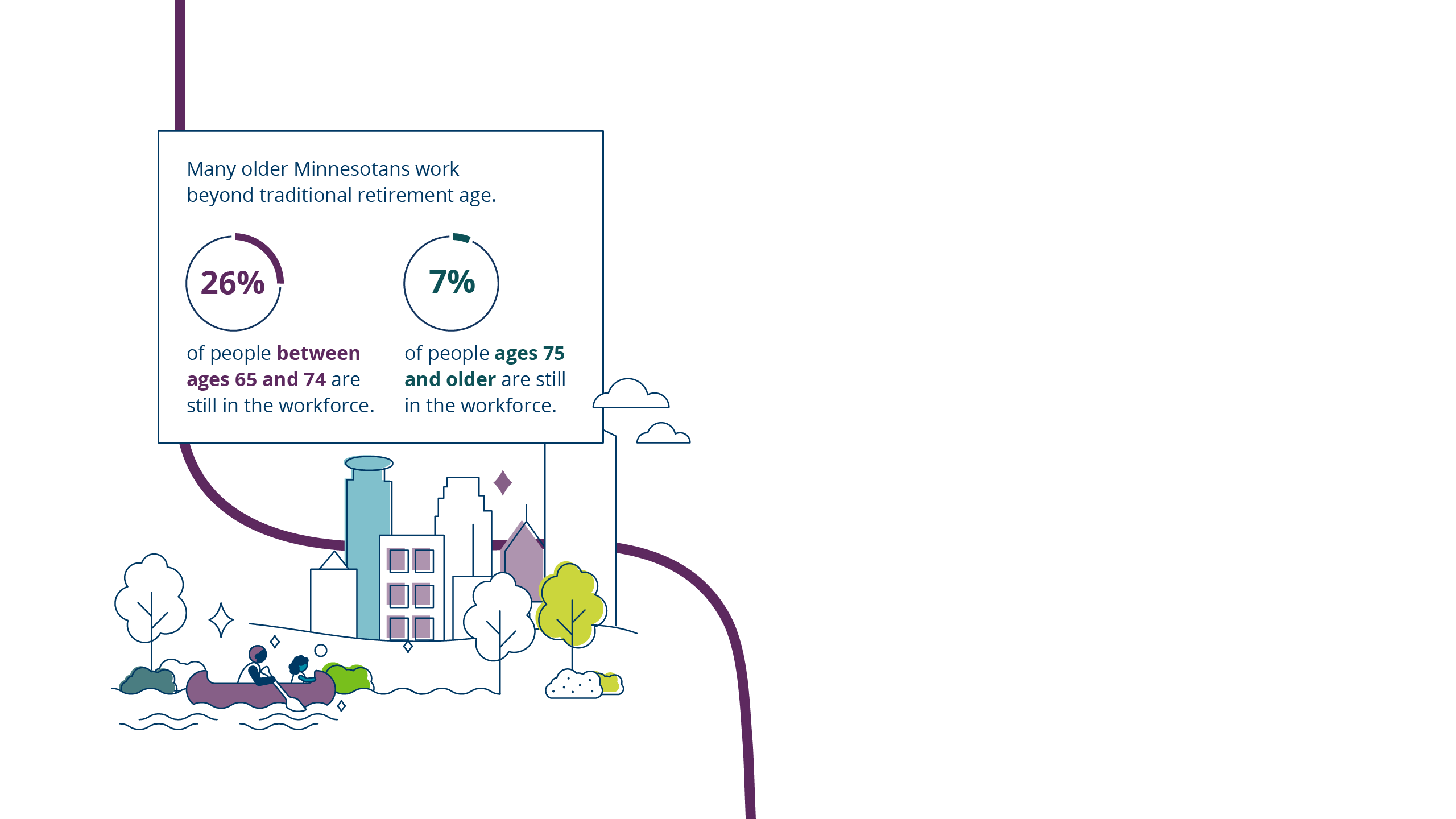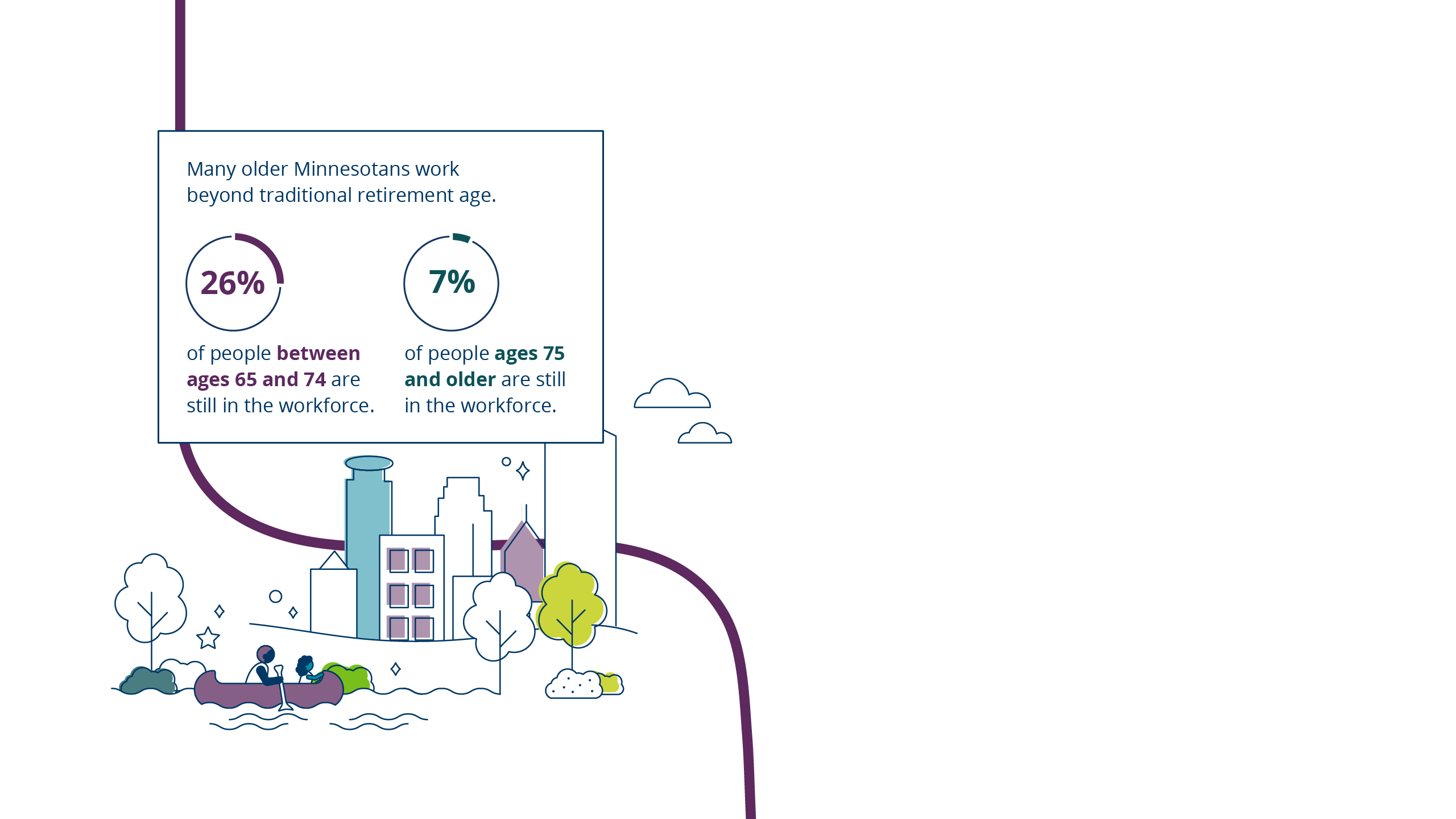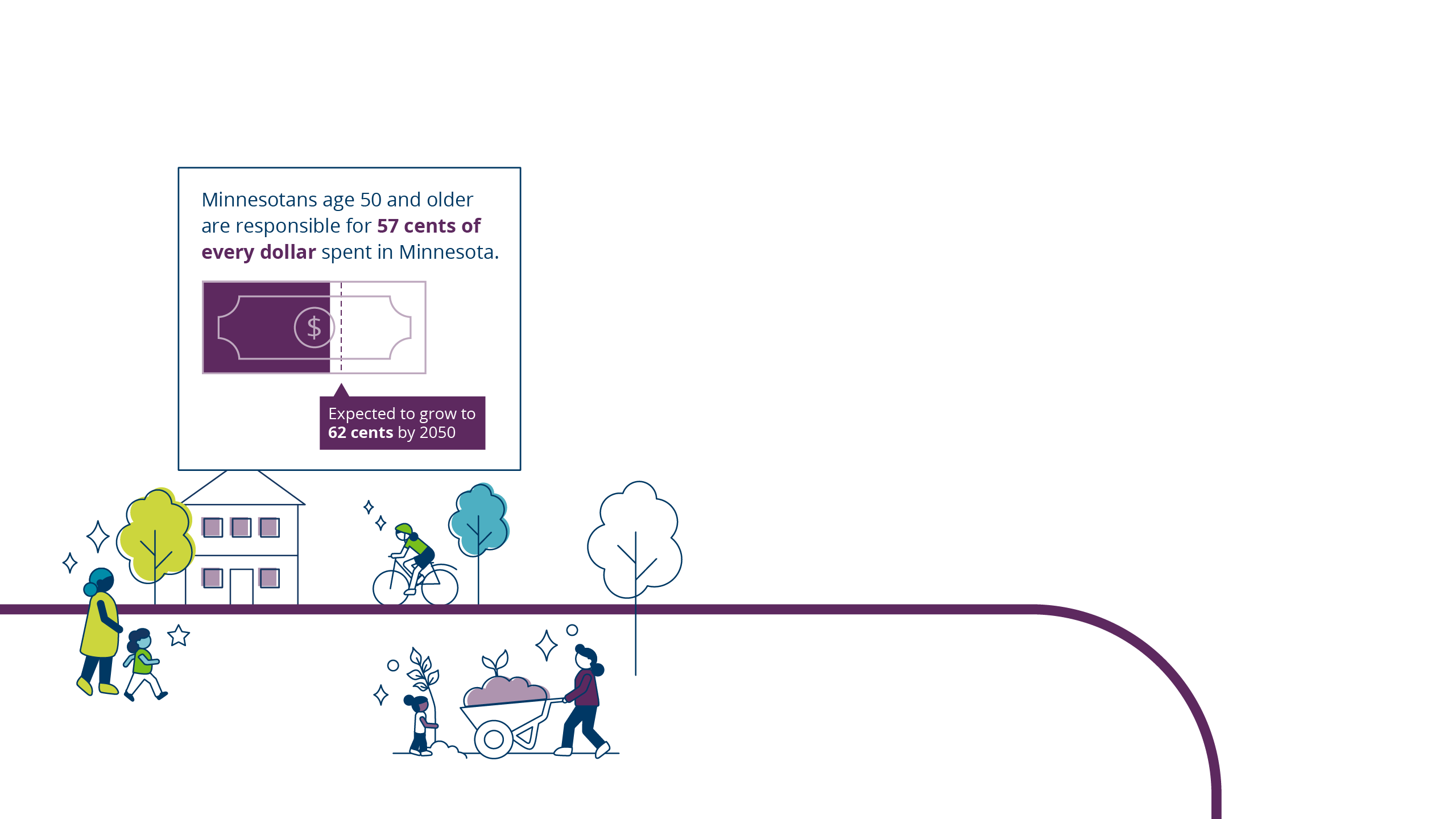Economic Security
and Vitality
Our communities will empower us to be financially secure and recognize us as valued contributors to the fabric of society as we age.

We contribute significantly to the economy as we get older. Yet many of us end up struggling financially in later life. We can’t age well without economic security.
We help drive local economies and make vital contributions to the social fabric of our communities as we age. Among Americans 65 and older, nearly one-third have jobs, up from less than one-quarter in 2000.1 However, as people live longer and costs continue to rise, many older Minnesotans—present and future—eventually struggle to cover essential needs, even if they were able to save for retirement.
To achieve this goal, our strategies are:
- Financial Security as We Age
- Community and Economic Contributors


How do we create financially secure futures for all Minnesotans?

Financial Security As We Age
Eight-seven percent of Minnesotans agree that as we age, we all have a right to basic housing, care, and support.2 Yet financial security in older age is no guarantee—regardless of Social Security and Medicare. Nearly one-third of Minnesota workers—roughly 700,000 people—don’t have access to a retirement plan at work.3
Costs for essentials like housing, food, and healthcare continue to rise, and our incomes decline in older age. The majority of people 65-plus cannot afford long-term services and supports on their own income, with the oldest people being the least able.4 This is compounded by growing income inequality and stark racial and ethnic disparities.5
Minnesota needs systems that ensure we all can count on basics like housing, food, health and care as we get older.

Community and Economic Contributors
While often perceived through a lens of needs, older people play vital roles in the workforce and in the community—as family and friend caregivers (including for grandchildren), consumers, entrepreneurs, and volunteers. Many organizations rely on older volunteers to perform critical services.
Older adults are also a huge economic force. The term “longevity economy” was coined to represent the sum of all economic activity connected to Americans 50 and older. According to AARP, Minnesota’s 50-plus population will drive economic growth for the next 30 years. Ensuring that we can contribute to and be engaged in the community for as long as possible is a win-win for residents of all ages and for communities.
Featured Statistic Sources
U.S. Census Bureau, Population Estimate, via Minnesota Compass.
US Census Bureau, via Minnesota Compass; Minnesota Community Action Partnership and Humphrey School of Public Affairs. Minnesota Poverty Report, April 2022. Figures refer to the Supplemental Poverty Rate.
AARP, The Longevity Economy Minnesota, 2018.
Footnotes
1 Federal Reserve Bank of Minneapolis, February 2023.
2 The Long Term Care Imperative, 2024.
3 Cook, Mike. 2023. “‘Retirement Crisis’ Looms in Minnesota, Lawmaker Says, and Legislators Seek a Solution - Session Daily - Minnesota House of Representatives.” Minnesota House of Representatives.
4 Johnson and Wang, 2019.
5 Brookings Institute, “Seven Facts About the Economic Security of Older Adults,” 2023.
About Age-Friendly Minnesota
Age-Friendly Minnesota is a collaborative statewide effort to make our systems and communities more inclusive of and responsive to older adults.




